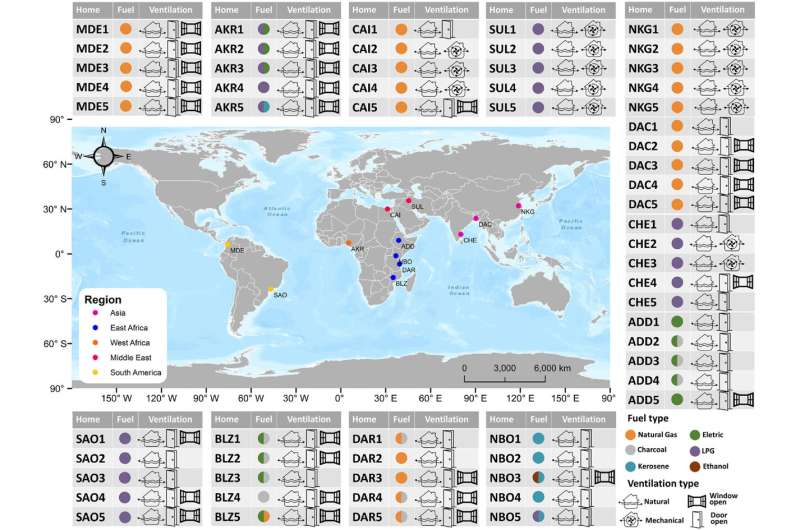Make cooking safe for all, including those in developing countries, say indoor air pollution experts

Developing countries should focus on keeping unnecessary occupants, such as children, out of kitchens during cooking to help reduce their exposure to dangerous levels of air pollution, recommends a study by the University of Surrey.
Researchers from Surrey's Global Centre for Clean Air Research (GCARE) also highlighted the benefits of using cleaner fuels and electric appliances that help reduce carbon dioxide levels within a kitchen by more than 32 percent, compared to the use of polluting fuels.
Professor Prashant Kumar, lead author and the founding director of GCARE at the University of Surrey, says that they "appreciate some of our recommendations might be less feasible for low-income households in studied countries—but we felt it critical to arm people with the knowledge and awareness to encourage governments and aid organizations to directly support more sustainable and higher impact interventions."
"As a result, we hope that decision-makers in many of these countries would now begin the foundational work of promoting cleaner fuels for cooking and safer habits within kitchens."
The study is the first to monitor 60 low-income kitchens across Asia, South America, the Middle East and Africa for carbon dioxide exposure, ventilation and thermal comfort.
The GCARE researchers and their partners found that kitchens that regularly had more than two people present during cooking sessions exhibited higher carbon dioxide levels.
The team found that cooking resulted in an average increase of 22 percent in carbon dioxide levels across the 60 homes.
Kitchens with their doors and windows open, that also used extractor fans during cooking were found to be the environments with optimal thermal comfort conditions. Having both kitchen doors and windows open during cooking was shown to reduce carbon dioxide levels by 14 percent when compared with environments that only kept their doors open.
Professor Maria de Fatima Andrade, co-author from the University of Sao Paulo, added that she believes "that this study is critical to women's rights as the majority of people involved in cooking in these regions are women and their children. It is important that people living with these severe health risks are better informed and equipped with the knowledge to protect themselves."
Professor Araya Asfaw, another co-author from Addis Adaba University, says that "sadly, 25 percent of the studied kitchens exceeded safe carbon dioxide levels. So, the simple act of cooking is a hazard for many people in these regions. Nevertheless, we found that larger kitchens with areas exceeding 46 square meters experience 28 percent less carbon dioxide levels compared to smaller ones."
The study has been published in the Journal of Building Engineering.
More information: Prashant Kumar et al, CO2 exposure, ventilation, thermal comfort and health risks in low-income home kitchens of twelve global cities, Journal of Building Engineering (2022). DOI: 10.1016/j.jobe.2022.105254
Provided by University of Surrey




















